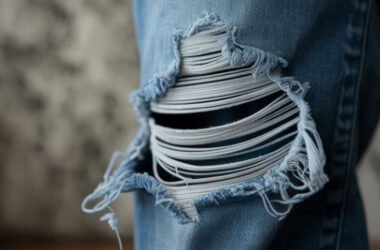Think about the last time you saw someone wearing a plain t-shirt with nothing but a single word or small icon on it. Chances are, you instantly made an assumption about the person wearing it—maybe that they were a minimalist, loyal to a certain brand, or simply in tune with modern trends. That’s the power of simple design. When done right, simplicity isn’t plain or boring—it’s bold, intentional, and unforgettable.
In today’s fast-moving, image-saturated world, brands don’t have long to make an impression. That’s why many successful businesses rely on pared-down yet impactful designs to stand out. A simple design can carry a bigger story than the most complex, visually overloaded graphic. The trick is learning how to transform that “simple” element into a strong brand statement. Let’s dive into how you can make this happen.
Why Simple Stands Out
There’s a reason iconic brands like Nike, Apple, and Coca-Cola lean on clean, straightforward designs. A swoosh, an apple with a bite, a timeless script—these are not complicated visuals. Yet they’re instantly recognizable worldwide. Simplicity makes a design easier to remember and easier to connect with emotionally.
When we overload a design with text, colors, or graphics, the message can get lost in the noise. A minimal approach, on the other hand, puts the spotlight directly on the essence of your brand. It’s like saying, “This is who we are—no distractions needed.”
And here’s the secret: simple design doesn’t mean effortless. Every line, curve, and space needs to be intentional. The best “simple” designs are the ones that communicate depth and clarity without saying too much.
Focus on the Core Message
If you’re aiming to make a brand statement with a simple design, start by asking: What do I want people to feel or remember the moment they see this?
For example:
- A wellness brand might lean on soothing, balanced designs that suggest calm and trust.
- A sports brand could highlight energy and motion with bold, clean typography.
- A boutique clothing label might showcase elegance with nothing more than a refined logo in muted tones.
Stripping a design down to its most essential element forces you to sharpen your message. It also challenges you to think about how one single image, word, or symbol can embody the entire story of your brand.
The Role of Typography in Simplicity
Typography plays a huge role in turning simplicity into a statement. Think about how different a bold, blocky font feels compared to a handwritten script. The typeface you choose can instantly shift perception.
For instance:
- Sans-serif fonts often communicate modernity, clarity, and strength.
- Serif fonts feel more traditional, professional, and trustworthy.
- Handwritten or brush fonts lean into creativity, personality, and authenticity.
If you’re designing something as simple as a one-word logo or slogan on apparel, typography alone can be the statement. Paired with the right spacing, sizing, and color, a single word can become unforgettable.
Colors That Speak Louder Than Words
Simple design often relies heavily on color psychology. Without intricate graphics, the palette becomes the main communicator.
- Black and white: Classic, timeless, and versatile.
- Bold primaries: Youthful, energetic, and playful.
- Muted tones: Sophisticated, understated, and chic.
Take Supreme, for example. Their brand is essentially just a bold red box with white text—but that splash of color combined with simplicity makes their design iconic and highly recognizable.
When choosing your colors, think not just about what looks good but also what aligns with your brand’s values and target audience.
Wearable Simplicity: Turning Apparel Into Identity
One of the most effective ways to turn a simple design into a brand statement is through apparel. Clothing becomes a walking billboard—except when the design is clever, people don’t even feel like they’re advertising. They’re simply wearing something they connect with.
This is where options like custom screen printed t-shirts come into play. With the right balance of simplicity and creativity, a basic shirt can become something people are proud to wear, representing not just a design, but a lifestyle or belief system. Think of how a plain white tee with a small logo on the chest can hold just as much influence as a fully illustrated graphic tee—sometimes even more.
Technology Makes It Easier Than Ever
Here’s the exciting part: you don’t need a massive budget or a professional design studio to make simplicity work for your brand. Technology has completely leveled the playing field.
Online design tools, templates, and AI-powered editors allow anyone to experiment with typography, color, and layouts in real time. You can test different variations of minimal logos or one-word statements until you find the one that truly clicks. Even small businesses and individuals now have the same ability to design, refine, and produce as large corporations did just a decade ago.
Technology doesn’t just make it accessible—it makes it fun. You get to see how small tweaks can make a design go from forgettable to iconic. The process itself becomes a learning experience, shaping how you think about brand identity and communication.
Real-World Examples of Simple Brand Statements
Let’s look at a few examples that show the power of simplicity in action:
- Glossier: Their pink bubble-wrap pouch with the minimal wordmark became instantly recognizable to beauty fans everywhere.
- Patagonia: Their designs are often nothing more than the brand name and a clean mountain silhouette—yet they embody sustainability and adventure.
- Adidas Originals: A simple trefoil logo communicates decades of cultural relevance and style.
What ties these examples together isn’t complexity—it’s clarity. Their designs aren’t cluttered, but they make an unforgettable impression.
How You Can Apply This
If you want to turn a simple design into a brand statement, here are some actionable steps to follow:
- Define your core value: What do you want your brand to stand for in one word or feeling?
- Simplify your message: Remove anything in your design that doesn’t serve that value.
- Choose intentional typography: Pick fonts that reinforce your brand’s personality.
- Leverage color psychology: Use colors strategically to evoke emotion and recognition.
- Test on wearable formats: See how your design looks on apparel, packaging, or merchandise—it should feel natural and powerful.
- Refine with technology: Use design tools to quickly experiment, iterate, and polish your work.
Final Thoughts
A simple design isn’t about doing less—it’s about doing what matters most. By stripping away the unnecessary, you’re left with a clear, confident brand statement that resonates deeply with your audience.
The next time you sit down to create a design, ask yourself: Could I remove something and make the message even stronger? That mindset is what transforms simplicity into power. When you embrace this approach, your brand won’t just be seen—it will be remembered.









